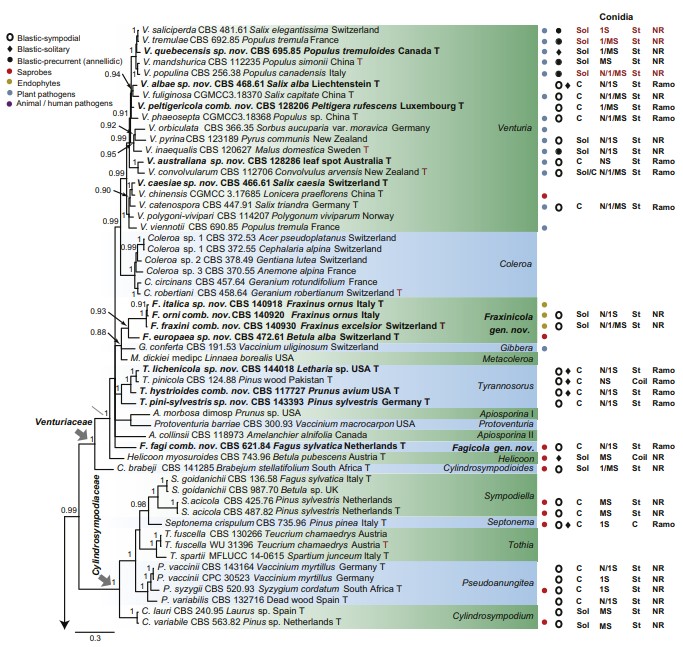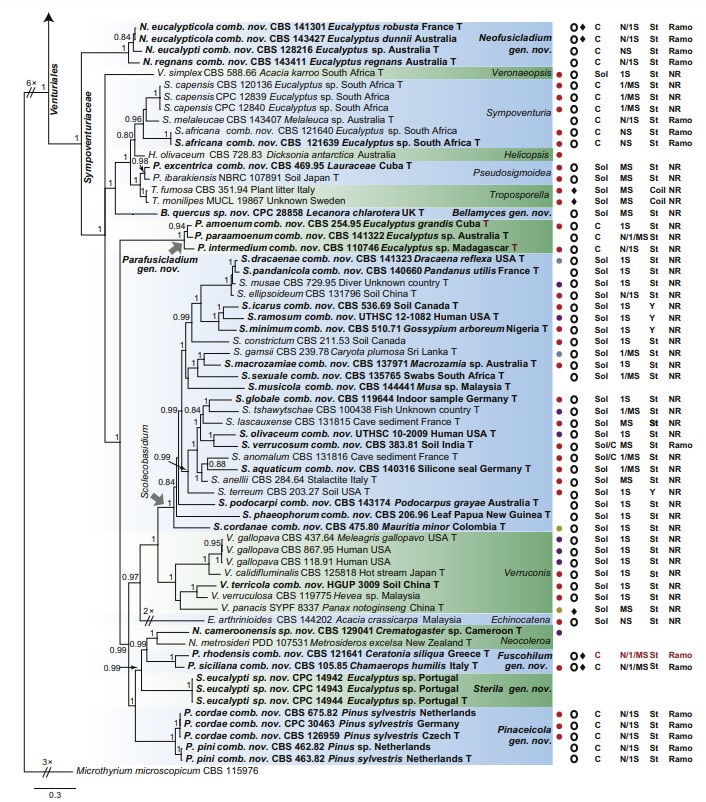Fuscohilum rhodensis (Crous & M.J. Wingf.) Crous, M. Shen & Y. Zhang ter, comb. nov.
MycoBank number: MB 831553; Index Fungorum number: IF 831553; Facesoffungi number: FoF;
Basionym: Fusicladium rhodense Crous & M.J. Wingf., Stud. Mycol. 58: 212. 2007.
Description and illustration: Crous et al. (2007b).
Typus: Greece, Rhodos, on branches of Ceratonia siliqua (Fabaceae), 1 Jun. 2006, P.W. Crous & M.J. Wingfield (holotype CBS H-19910, culture ex-type CBS 121641 = CPC 13156).
Notes: Fusicladium rhodense was introduced by Crous et al. (2007b) having a pseudocladosporium-like morphology and conidial hila that are somewhat darkened and thickened. Phylogenetically, F. rhodense and F. sicilianum formed a separate generic clade within Sympoventuriaceae (Fig. 1). These two species were therefore assigned to a new genus, Fuscohilum.

Fig 1. Consensus phylogram (50 % majority rule) of 691 952 trees resulting from a Bayesian analysis of the combined alignment of ITS, LSU, tef1, tub2 and rpb2 sequences of Venturiales. Bayesian posterior probabilities (PP) > 0.80 are shown at the nodes and the scale bar represents the expected changes per site. Some branches were shortened to facilitate layout. The tree was rooted with Microthyrium microscopicum (CBS 115976). Culture collection numbers, substrates and countries are indicated behind the species names. Those highlighted in bold are new taxa or new combinations proposed in this study, and type strains are marked with “T” (ex-type in black, ex-epitype in red). Relevant morphological characteristics plotted are abbreviated as follows: Sol – conidia solitary, C – conidia in chains, NS – aseptate conidia, 1S – 1-septate conidia, MS – multi- septate conidia (septa ≥ 2), St – straight or slightly curved conidia, Coil – coiled conidia, Y – Y-shaped conidia; Ramo – ramoconidia present, NR – ramoconidia not observed; ? – asexual morphology not available (either from references or from sporulation induced in this study); and morphological characters plotted in red means strains failed to sporulate in this study and plotted values are taken from the original description, observation of this study or related references. Other characteristics are explained in the legend.

Fig 1. (Continued).
